ING image release
23 December, 2020
The Great Conjunction of Jupiter and Saturn
|
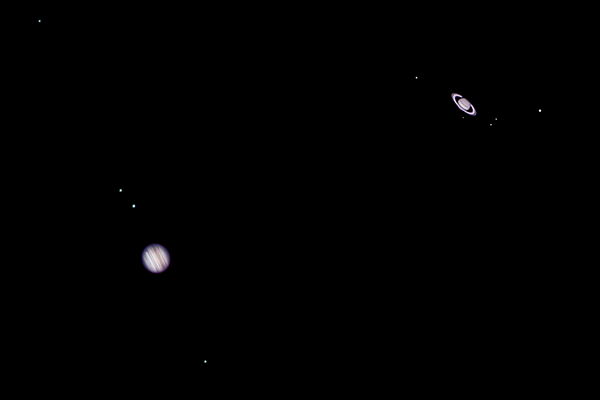
|
This image of an unusually-close conjunction of Jupiter and Saturn was obtained on 21 Dec 2020, during tests of the new optical
corrector at the prime focus of the William Herschel Telescope (WHT). The image is a composite of exposures taken with a CMOS
camera, through blue, green and red filters. Credit: Javier Méndez, Richard Ashley, Lilian Domínguez, Émilie Lhomé, Jure Skvarc and Ovidiu Vaduvescu (Isaac Newton Group of Telescopes, La Palma, Spain). Large format: PNG. |
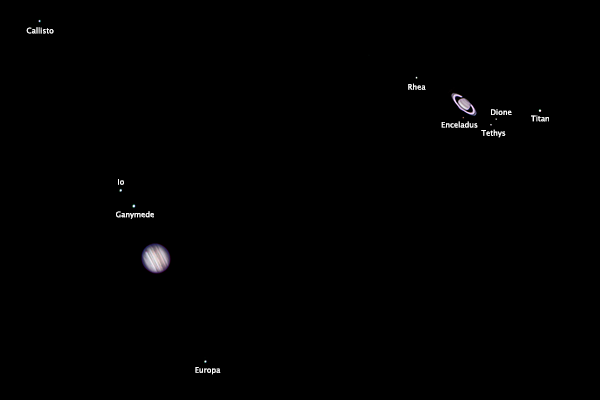
|
Same as before showing moon names. Large format: PNG. |
A conjunction of Jupiter and Saturn happens every 20 years or so, when Jupiter overtakes Saturn in its journey around the ecliptic.
The conjunction of 2020 brought the two planets closer together on the sky than any other conjunction since 1623. At closest
approach, the two planets were separated by just 6 arcmin, approximately one fifth the angular diameter of the moon. The image
shows Jupiter (with cloud bands and the Red Spot) and Saturn (with rings), each accompanied by a retinue of moons (the faint dots). The next close
conjuntion of Jupiter and Saturn will be in 2080.
The WHT's new optical corrector enlarges the area of sky seen by the telescope by a factor of 9, providing a field of view 2 deg
across (4 times the angular diameter of the moon). The light from up to 900 stars and galaxies within this field of view will be fed
by optical fibres to the new WEAVE spectrograph. In 2021, WEAVE will begin a dedicated multi-year campaign of surveys addressing
several key questions relating to the formation of the Milky Way, the evolution of its stars, and the formation and evolution of other
galaxies.
|
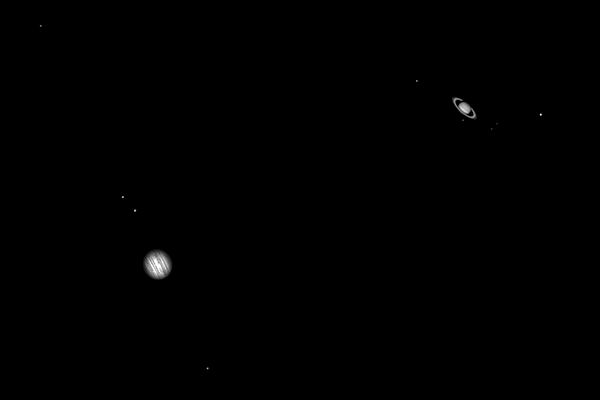
|
Six stacked 0.015-second exposures taken in the R band taken on 21st December 2020 at 18:54 UT.
Credit: Javier Méndez, Richard Ashley, Lilian Domínguez, Émilie Lhomé, Jure Skvarc and Ovidiu Vaduvescu (Isaac Newton Group of Telescopes, La Palma, Spain).
Medium format: PNG.
Large format: PNG.
|
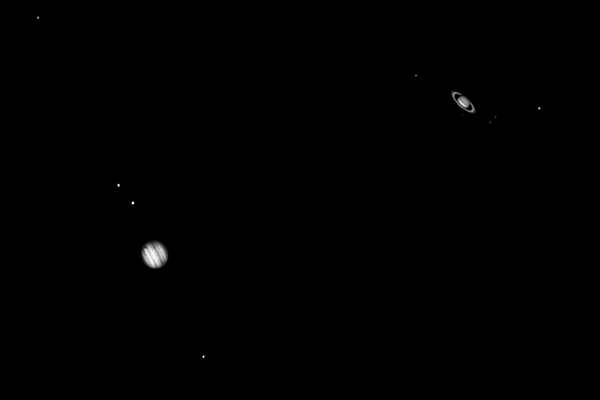
|
Six stacked 0.015-second exposures taken in the G band taken on 21st December 2020 at 19:11 UT.
Credit: Javier Méndez, Richard Ashley, Lilian Domínguez, Émilie Lhomé, Jure Skvarc and Ovidiu Vaduvescu (Isaac Newton Group of Telescopes, La Palma, Spain).
Medium format: PNG.
Large format: PNG.
|
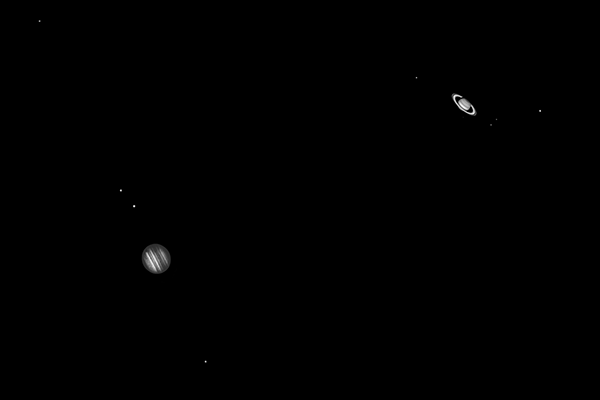
|
Six stacked 0.02-second exposures taken in the B band taken on 21st December 2020 at 19:04 UT.
Credit: Javier Méndez, Richard Ashley, Lilian Domínguez, Émilie Lhomé, Jure Skvarc and Ovidiu Vaduvescu (Isaac Newton Group of Telescopes, La Palma, Spain).
Medium format: PNG.
Large format: PNG.
|
About the William Herschel Telescope
Based on observations made with the William Herschel Telescope (WHT) operated on the island of La Palma by the Isaac Newton Group of Telescopes (ING) in the Spanish Observatorio del Roque de los Muchachos of the Instituto de Astrofísica de Canarias (IAC). The ING is funded by the Science and Technology Facilities Council (STFC-UKRI) of the United Kingdom, the Nederlandse Organisatie voor Wetenschappelijk Onderzoek (NWO) of the Netherlands, and the IAC in Spain. IAC's contribution to ING is funded by the Spanish Ministry of Science, Innovation and Universities.
|
|



